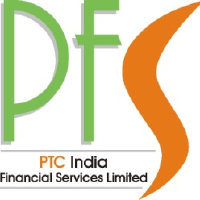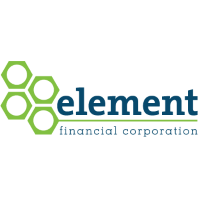
PTC India Financial Services Ltd
NSE:PFS

Profitability Summary
PTC India Financial Services Ltd's profitability score is hidden . We take all the information about a company's profitability (such as its margins, capital efficiency, free cash flow generating ability, and more) and consolidate it into one single number - the profitability score. The higher the profitability score, the more profitable the company is.
Profitability Score
We take all the information about a company's profitability (such as its margins, capital efficiency, free cash flow generating ability, and more) and consolidate it into one single number - the profitability score. The higher the profitability score, the more profitable the company is.
We take all the information about a company's profitability (such as its margins, capital efficiency, free cash flow generating ability, and more) and consolidate it into one single number - the profitability score. The higher the profitability score, the more profitable the company is.
Profitability Score
Margins
Profit margins represent what percentage of sales has turned into profits. Simply put, the percentage figure indicates how many cents of profit the company has generated for each dollar of sale.
Profit margins help investors assess if a company's management is generating enough profit from its sales and whether operating costs and overhead costs are being contained.
Earnings Waterfall
PTC India Financial Services Ltd

|
Revenue
|
6.6B
INR
|
|
Cost of Revenue
|
-3.4B
INR
|
|
Gross Profit
|
3.2B
INR
|
|
Operating Expenses
|
-475.4m
INR
|
|
Operating Income
|
2.7B
INR
|
|
Other Expenses
|
-967.8m
INR
|
|
Net Income
|
1.7B
INR
|
Margins Comparison
PTC India Financial Services Ltd Competitors

| Country | Company | Market Cap |
Gross Margin |
Operating Margin |
Net Margin |
||
|---|---|---|---|---|---|---|---|
| IN |

|
PTC India Financial Services Ltd
NSE:PFS
|
21.7B INR |
48%
|
41%
|
26%
|
|
| IN |

|
Indian Railway Finance Corp Ltd
NSE:IRFC
|
1.7T INR |
0%
|
99%
|
24%
|
|
| IN |

|
Power Finance Corporation Ltd
NSE:PFC
|
1.4T INR |
100%
|
98%
|
22%
|
|
| IN |

|
REC Limited
NSE:RECLTD
|
1.1T INR |
37%
|
36%
|
29%
|
|
| JP |

|
Shinkin Central Bank
TSE:8421
|
1.8T JPY |
0%
|
0%
|
9%
|
|
| JP |

|
Mitsubishi HC Capital Inc
TSE:8593
|
1.4T JPY |
22%
|
9%
|
6%
|
|
| CA |

|
Element Fleet Management Corp
TSX:EFN
|
12B CAD |
72%
|
20%
|
18%
|
|
| TW |

|
Chailease Holding Company Ltd
TWSE:5871
|
183.7B TWD |
67%
|
30%
|
22%
|
|
| IN |
I
|
Indian Renewable Energy Development Agency Ltd
NSE:IREDA
|
471.6B INR |
38%
|
34%
|
25%
|
|
| IN |

|
Housing and Urban Development Corporation Ltd
NSE:HUDCO
|
455.4B INR |
100%
|
96%
|
28%
|
|
| JP |

|
Tokyo Century Corp
TSE:8439
|
717.7B JPY |
20%
|
8%
|
6%
|
Return on Capital
Return on capital ratios give a sense of how well a company is using its capital (equity, assets, capital employed, etc.) to generate profits (operating income, net income, etc.). In simple words, these ratios show how much income is generated for each dollar of capital invested.


Return on Capital Comparison
PTC India Financial Services Ltd Competitors

| Country | Company | Market Cap | ROE | ROA | ROCE | ROIC | ||
|---|---|---|---|---|---|---|---|---|
| IN |

|
PTC India Financial Services Ltd
NSE:PFS
|
21.7B INR |
7%
|
3%
|
4%
|
4%
|
|
| IN |

|
Indian Railway Finance Corp Ltd
NSE:IRFC
|
1.7T INR |
13%
|
1%
|
6%
|
6%
|
|
| IN |

|
Power Finance Corporation Ltd
NSE:PFC
|
1.4T INR |
22%
|
2%
|
9%
|
8%
|
|
| IN |

|
REC Limited
NSE:RECLTD
|
1.1T INR |
22%
|
3%
|
4%
|
3%
|
|
| JP |

|
Shinkin Central Bank
TSE:8421
|
1.8T JPY |
2%
|
0%
|
0%
|
0%
|
|
| JP |

|
Mitsubishi HC Capital Inc
TSE:8593
|
1.4T JPY |
8%
|
1%
|
2%
|
1%
|
|
| CA |

|
Element Fleet Management Corp
TSX:EFN
|
12B CAD |
15%
|
3%
|
4%
|
3%
|
|
| TW |

|
Chailease Holding Company Ltd
TWSE:5871
|
183.7B TWD |
13%
|
2%
|
8%
|
3%
|
|
| IN |
I
|
Indian Renewable Energy Development Agency Ltd
NSE:IREDA
|
471.6B INR |
19%
|
3%
|
4%
|
3%
|
|
| IN |

|
Housing and Urban Development Corporation Ltd
NSE:HUDCO
|
455.4B INR |
16%
|
3%
|
9%
|
7%
|
|
| JP |

|
Tokyo Century Corp
TSE:8439
|
717.7B JPY |
10%
|
1%
|
2%
|
1%
|
Free Cash Flow
Free cash flow (FCF) is the money a company has left over after paying its operating expenses and capital expenditures. The more free cash flow a company has, the more it can allocate to dividends, paying down debt, and growth opportunities.
If a company has a decreasing free cash flow, that is not necessarily bad if the company is investing in its growth.























































 You don't have any saved screeners yet
You don't have any saved screeners yet
